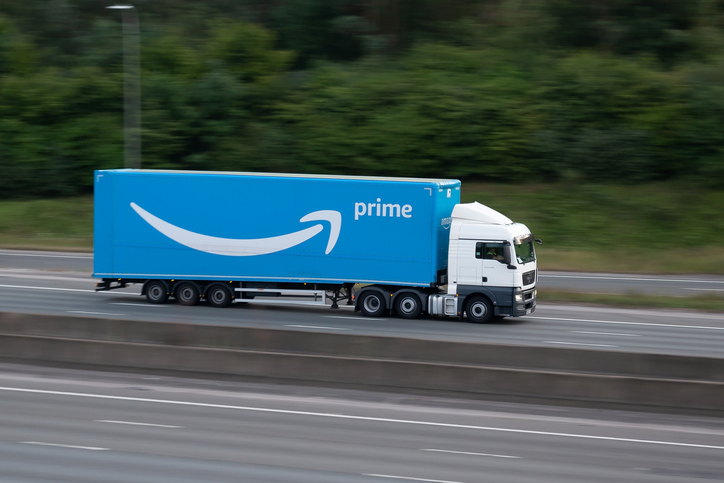It’s still too early to say what shape the recovery will be, but what is emerging from the fog of the pandemic/recession mash-up are ambitious brands moving beyond the virtue-signalling of “we’re all in this together” to begin positioning for a post-COVID world. In doing so, they’re placing bets on what our lives will look and feel like in the future.
James Clifton, Group Chief Executive of The MISSION Group, offers CEO Today his perspective on which global brands are likely to thrive in the aftermath of the COVID-19 pandemic.
As a lad, I recall studying Maslow’s Hierarchy of Needs and thinking it a somewhat redundant pyramid. Surely we were way beyond the lower tiers of safety, security and shelter and smugly ensconced in the upper tiers of self-actualisation, recognition and esteem? Having recently wondered where my next sheet of toilet paper was coming from, it turns out I was wrong. That security/shelter thing is always with us, even if we fool ourselves it’s not.
The pandemic and the resulting recession has changed how we think, consume and feel about what we buy, how we buy it and from whom. Not only are we actively engaged in the fundamentals of safety and security but, simultaneously, we’re also yearning for the validation of self-actualisation, perhaps as a rejection of our previous indulgent lifestyles that now seem as obsolete as a night at the theatre.
Businesses likely to satisfy either end of that need spectrum, or indeed both, seem positioned to thrive if they get their strategies right.
Obviously, home delivery brands – Amazon, Grubhub, eBay, Etsy – are making hay at the moment. But older brands who re-engineered their offer quickly to support remote delivery – Walmart, Best Buy, Argos – also look well-positioned for the future.
Any brand that helps us feel in control of our lives – health, work, fitness, entertainment – is also ascendant. Peleton can’t keep up with the demand for its £2,000+ cycles and treadmills. Lululemon’s acquisition of Mirror, so you can exercise while admiring your outfit, seems like a smart and synergistic move. Gousto and Hello Fresh amongst others cater (pun intended) to our need for easy, healthy nutrition delivered to our kitchens. Apps like Headspace, Sleepcycle and WebMD help us feel we’re in control of our wellbeing in a world gone haywire. Empowerment is the magic ingredient here.
We’re also feeling a little less selfish just now and brands such as thrift.plus in the UK and TheRealReal in the US are changing not just what we buy (high-end fashion in these examples) but the impact of our purchasing habits on our world. The CharityMiles app is another example of a fusion of health, charity and technology that feels perfect for our new benevolent mindset. Indeed, from Fitbits to smartwatches, and from Zoom to Pathfindr, technology brands are doing well, helping us do what we want and sometimes changing how things actually work.
Disney+ launched to spectacular success, offering deep content at a low price to keep the kids happy in a locked down home. Netflix has also been a big winner of the lockdown wars. A streaming shakeout seems likely soon, with some players failing to define their purpose compellingly (Qibi), pricing it wrong, or just plain confusing people (HBO Now, Max or Go?).
But it’s still early days to place definitive bets. Looking back on the crash of 2008/9, it's instructive to cast a glance over the winners and losers to see what we might learn.
The shock of giant financial institutions disappearing overnight made us question the permanence of big brands. That sense of “the world has changed”, which we feel again now, led to the growth of disruptor brands - like Ratesetter, ING, Tesco Bank, MetroBank, Virgin Money - positioned as nimble alternatives to lumbering giants.
The deep austerity of 2009 onwards made us seek value. Brands like Aldi, Lidl, TK Maxx, and Primark found customers no longer embarrassed to shop for value.
The deep austerity of 2009 onwards made us seek value. Brands like Aldi, Lidl, TK Maxx, and Primark found customers no longer embarrassed to shop for value. That value proposition rippled through other sectors too: KIA and Hyundai established footholds in Europe and the US from which they’ve grown into serious marques. AirB&B and the budget airlines that introduced us to the fun of unallocated seating flourished and permanently disrupted the travel sector.
After the last financial crisis, we saw the birth of the gig economy, for better or worse: people taking multiple jobs to make ends meet, attracted by the promise of being in control of their work/life balance and theoretically unlimited earnings. Uber, Lyft, Grubhub, Doordash, TaskRabbit all scratched this itch.
Not everyone made it of course. Brands such as eToys, Goldfish, beautyjungle, egg and countless others stumbled along the way.
But many of the most agile, ambitious brands of that era are still with us. Luck always plays a part, but those that succeeded typically had a clear, defined purpose expressed via a strong brand personality that caught customers’ attention. They were accessible, positive and seemed to ‘fit’ with the sensibility of the time.
Which brings us to the role of marketing in helping 2020’s brands not only survive but thrive in unprecedented times.
If the remote delivery of goods and services persists, even if things go back to ‘normal’, then costs for suppliers can be radically reduced with less invested in physical shops and customer-facing staff. The danger is that, once you’re ‘just’ a remote online supplier, you’re competing with the best of the rest of the world. It’s as easy to fulfil an order for bedlinens from Shanghai as it is from Sheffield. To thrive in this economy, you will need to be acknowledged as one of the very best at what you do.
There will likely be consumers who go in the opposite direction and embrace a ‘hyperlocal’ philosophy, preferring local suppliers they can meet, talk with and support. We were already seeing this pre-pandemic with local collectives, food provenance and Shop Small initiatives, a community vibe that has only been strengthened by the trauma of lockdown.
In truth, both the remote and the hyperlocal trends will likely co-exist, but for different needs. Just as back in 2009 – people ate Tesco Value ready meals yet splurged on a pair of Jimmy Choos or a Tag watch (selective affluence we called it). Now you might be content to get your grocery staples delivered from Aldi but buy your organic cheese from that nice man at the farmers’ market who smells a bit weird.
The part we marketers can help with is to define and explain the purpose of the brands vying for your limited attention - to help them find and engage a viable customer base and, critically, to build active brand preference. Because in a world where literally everything is available to order on your smartphone and direct to your door, the brand you choose needs to mean something clear, compelling and memorable.
A recent work by Millward Brown has helped validate what many of us long suspected: that brand share of search broadly correlates to share of market. Hence why brand preference, not just recall or awareness, is a key marketing goal going forward: if life is online, then brands need to own their space from the very first search.
It is the classic remit of marketing, only more critical than ever because (1) the choice of options is almost limitless, (2) your available mental bandwidth is constrained and (3) the survival stakes are very real.
So the task is to identify and understand the customer, decide how and where to engage with them, distil the proposition to its simplest, clearest form, then show how perfectly a brand fits into their personal world, in every way: economic, functional, societal and emotional.
I call it “brand bonding” - cementing customers and brands together around a shared purpose or role in life, combining both long term (brand) and short term (performance) objectives in a balanced strategy.
Successful brand bonding, in normal times, creates enduring preference and loyalty. As in life, I suspect bonds forged in a time of crisis may prove to be even stronger. So hopefully the businesses who get it right in the current environment can better survive whatever chaos is yet to come!











